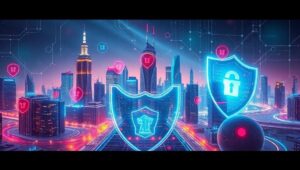Building Resilient Computing Systems Against Attacks (2025+)
In an increasingly interconnected and digitized world, the resilience of computing systems against cyberattacks is paramount. As we advance into 2025 and beyond, the sophistication and frequency of these attacks are expected to escalate, demanding a proactive and robust approach to cybersecurity. This article explores the key strategies and technologies for building resilient computing systems capable of withstanding and recovering from advanced cyber threats.
Understanding the Evolving Threat Landscape
The threat landscape is continuously evolving, with attackers leveraging advancements in AI, machine learning, and quantum computing to develop more sophisticated attack vectors. Common threats include:
- Ransomware: Encrypting critical data and demanding ransom for its release.
- Supply Chain Attacks: Targeting vulnerabilities in third-party software and hardware.
- Advanced Persistent Threats (APTs): Long-term, targeted attacks aimed at stealing sensitive information.
- Zero-Day Exploits: Exploiting previously unknown vulnerabilities before patches are available.
- Distributed Denial-of-Service (DDoS) Attacks: Overwhelming systems with malicious traffic, rendering them inaccessible.
Key Strategies for Building Resilient Systems
To build resilient computing systems, organizations must adopt a multi-layered approach that encompasses prevention, detection, and response. Here are some key strategies:
-
Robust Security Architecture:
- Defense in Depth: Implementing multiple layers of security controls to protect against various attack vectors. This includes firewalls, intrusion detection systems, and endpoint protection.
- Zero Trust Architecture: Verifying every user and device attempting to access network resources, regardless of their location. This minimizes the impact of compromised credentials.
- Segmentation: Dividing the network into isolated segments to limit the lateral movement of attackers.
-
Proactive Threat Detection and Monitoring:
- Security Information and Event Management (SIEM): Collecting and analyzing security logs from various sources to identify suspicious activities.
- Threat Intelligence: Leveraging threat intelligence feeds to stay informed about emerging threats and vulnerabilities.
- Anomaly Detection: Using machine learning algorithms to detect unusual patterns of behavior that may indicate an attack.
-
Incident Response and Recovery:
- Incident Response Plan: Developing a detailed plan for responding to and recovering from security incidents. This includes clear roles, responsibilities, and communication protocols.
- Regular Backups: Performing regular backups of critical data and systems to ensure quick recovery in the event of a successful attack.
- Disaster Recovery Planning: Creating a comprehensive disaster recovery plan that outlines how to restore operations in the event of a major disruption.
-
Security Automation and Orchestration:
- Automated Patch Management: Automating the process of patching software vulnerabilities to reduce the window of opportunity for attackers.
- Security Orchestration, Automation, and Response (SOAR): Automating incident response tasks to improve efficiency and reduce response times.
- Automated Threat Hunting: Using automated tools to proactively search for threats within the network.
-
Security Awareness and Training:
- Employee Training: Providing regular security awareness training to employees to educate them about common threats and best practices.
- Phishing Simulations: Conducting simulated phishing attacks to test employee awareness and identify areas for improvement.
- Role-Based Training: Tailoring security training to specific roles and responsibilities within the organization.
Emerging Technologies for Enhanced Resilience
Several emerging technologies are poised to play a crucial role in enhancing the resilience of computing systems in the coming years:
- AI-Powered Security: Using AI and machine learning to automate threat detection, incident response, and vulnerability management.
- Blockchain Technology: Leveraging blockchain for secure data storage and identity management.
- Quantum-Resistant Cryptography: Implementing cryptographic algorithms that are resistant to attacks from quantum computers.
- Confidential Computing: Protecting sensitive data in use by performing computations in a trusted execution environment (TEE).
- Self-Healing Systems: Developing systems that can automatically detect and recover from failures and attacks.
Best Practices for Implementation
To effectively implement these strategies and technologies, organizations should follow these best practices:
- Conduct Regular Risk Assessments: Identify and prioritize the most critical assets and vulnerabilities.
- Implement a Security Framework: Adopt a recognized security framework such as NIST or ISO 27001.
- Continuously Monitor and Evaluate Security Controls: Regularly test and update security controls to ensure they remain effective.
- Foster a Culture of Security: Promote security awareness and responsibility throughout the organization.
- Collaborate and Share Information: Participate in industry forums and share threat intelligence with other organizations.
Conclusion
Building resilient computing systems against attacks is an ongoing process that requires a proactive and adaptive approach. By implementing robust security architectures, leveraging emerging technologies, and fostering a culture of security, organizations can significantly enhance their ability to withstand and recover from cyber threats in 2025 and beyond. As the threat landscape continues to evolve, it is essential to stay informed, adapt strategies, and invest in the technologies and training necessary to protect critical assets and ensure business continuity.




